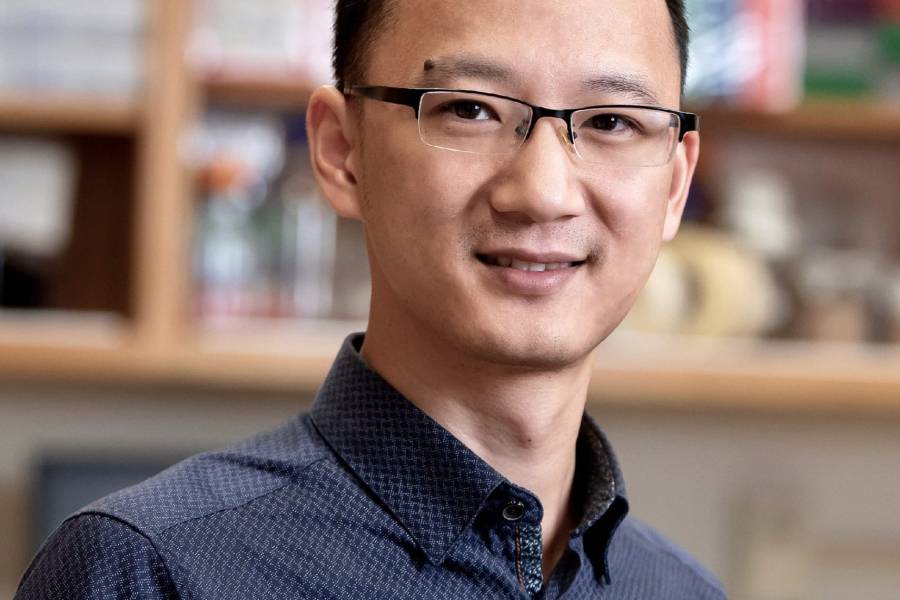Xiongyi Huang, assistant professor in the Krieger School's Department of Chemistry, was named Oct. 14 as a recipient of a 2021 Packard Fellowship for Science and Engineering. The program provides "the nation's most promising early career scientists and engineers with flexible funding and the freedom to take risks and explore new frontiers in their fields of study." Each recipient receives $875,000 over five years.
Through billions of years of evolution, nature has done a wonderful job of creating a staggering array of enzymes that enable biological systems to survive under a wide range of environments. These macromolecular proteins can catalyze reactions under benign conditions with marvelous efficiency, selectivity, and sustainability. But most chemical compounds that have become essential to our daily life, such as many drugs, are made using human-invented synthetic transformations that have no counterpart in biology. While supporting our modern society, these artificial chemical processes are often hazardous, have low efficiency, and depend on toxic reagents and solvents. What if, Huang asks, there's a way to bridge the worlds of biology and synthetic chemistry to develop new, affordable, and sustainable processes for chemical synthesis?
Nature's existing enzymes include a vast array of functional and structural diversity. Reconfiguring metalloenzymes—enzymes that contain metals—to enable abiological metal-catalyzed chemical transformations would provide innovative and sustainable solutions to a wide range of problems in modern chemical synthesis. To do so, Huang's group mines the native machineries of natural enzymes to find structures and functions compatible with designated purposes, and then modifies their DNA to nudge their evolution in these new directions.

Image caption: Xiongyi Huang, center, and lab members working on a fluorescent experiment.
Image credit: Will Kirk / Johns Hopkins University
With the integration of a variety of techniques—macromolecular modeling, bioinformatics, machine learning, protein engineering, and organic synthesis—coupled with detailed mechanistic analysis of current biocatalytic systems, Huang's group will develop enzymes with functions entirely new to biology.
"Our lab is working on some very challenging transformations to incorporate into nature," Huang says. "This work requires a lot of imagination; you sometimes find yourself doing detective work to identify hidden connections between naturally occurring enzyme systems and synthetic systems. Then you have to bridge different disciplines to make this happen. Eventually, we hope our work will cause a paradigm shift in how people do drug discovery and chemical synthesis that potentially will lead to useful tools for therapeutic applications."
Huang's work will also generate insights that would enrich our knowledge of both synthetic chemistry and biology. Creating new biocatalytic systems based on natural proteins but with entirely different functions opens up opportunities to expand scientists' mechanistic understanding of the changes that enable the new-to-nature chemistry, contributing fundamental understanding especially in the fields of biochemistry and enzymatic catalysis.
"It's very important to get this support so I can really develop very ambitious, cutting-edge research projects in my group," Huang says. "Some of our ideas have been turned down by conventional funding agencies because they were seen as too ambitious or too risky. With Packard, we'll be able to explore all of those."
The fellowship reflects the work of all the members of his laboratory, he added. "Although the award is given to me, my group are the people who made it possible. They are fearless about scientific challenges and it is absolutely fortunate to work with this talented group of people."
Posted in Science+Technology, University News
Tagged chemistry, faculty news








